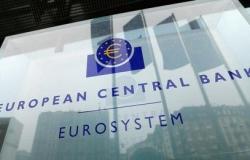Published on June 20, 2024
–
HAS
+
Energy prices are at the heart of the electoral debates on purchasing power: commitment to stop the increase in the price of gas announced by 12% on 1er July, reduction in VAT to 5.5% on fuels, electricity, gas and fuel oil, exit from European electricity market pricing for the National Rally, blocking of prices for essential goods, including energy and fuels for the New Popular Front, commitment to reduce electricity prices by 10 to 15% on 1er February 2025 by the Minister of the Economy, etc.
The purpose of this article is to analyze the possible room for maneuver for the price of gas, beyond measures such as the reduction in VAT, which could only be financed at the cost of indebtedness and a deficit. public accounts still growing, while the state of public accounts is already alarming.
No significant room for maneuver, apart from taxes (VAT and carbon tax)
The gas bill has four components:
- The cost of gas supply
- The cost of transporting it to the point of consumption
- Business costs
- The taxes
1. The cost of gas supply
Fossil natural gas consumed in France is entirely imported, since the depletion of the Lacq deposit and the abandonment of the evaluation of potential shale gas reserves for environmental reasons.
Gas suppliers obtain their supplies from producers through long-term contracts (price indexed to that of oil), and on the wholesale market, gas coming mainly from Norway and Algeria by pipelines, from the USA, from Qatar and from Nigeria in the form of LNG (Liquefied Natural Gas), the supply of Russian gas to France remaining only in the form of LNG since the war in Ukraine, for around 10% of consumption.
The graph below shows that the price of gas on the wholesale market, which oscillated around 20 euros/MWh before 2021, increased suddenly from September 2021 to reach more than 100 euros/MWh at the end of 2021. It remained above this value during the year 2022, with speculative peaks due to the Russian crisis, before returning in spring 2023 to a range between 30 and 50 euros/MWh.
Over the recent period, in its monthly publications on the benchmark price of natural gas[1], following the end of the regulated tariff at the end of June 2023, the CRE (Energy Regulatory Commission) retained, as the cost of supplying the MWh, 49 euros in December 2023; 45.6 euros in January 2024; 28 euros in June 2024; and 32.2 euros for July 2024.
We therefore see the persistence of significant volatility in the cost of supply, which is inevitably suffered by French consumers, even if it does not reach the speculative peaks of the year 2022.
Green gas (biomethane):
In recent years, the production of biomethane (renewable thermal energy) has been growing, mainly from agricultural waste in methanizers, which is largely injected into the distribution network: the installed capacity is of the order of 12 TWh/year[2], which represents 5% of consumption of around 240 TWh. It could exceed 10% of consumption in 2030.
This development is part of the policy of decarbonization of the economy and contributes to waste management, job creation and energy sovereignty, but has a cost: the purchase price is around 90 euros/ MWh [3]which requires a subsidy which is found in the form of a tax on the invoice (the TICGN, which increased from 8.4 to 16.4 €/MWh in January 2024), and in the form of investments in the distribution network , remunerated by the gas transport tariff.
2. The cost of transporting gas
These are transport and storage costs, and the cost of distribution networks, which are regulated activities, mainly ensured respectively by GRT Gaz, Storengy and GRDF (subsidiaries of ENGIE), as well as Terega for transport in the SO.
The average cost of transport and storage will increase to 1er July 2024 from 10.7 to 12.3 €/MWh, an increase of 14%, while that of distribution will increase from 21.2 to 26 €/MWh (for a heating customer consuming 12 MWh/year), an increase of 23%.
In total, the transmission cost will increase from 32.8 to 38.3 €/MWh for a typical heating customer, an increase of 17%.
The CRE details the calculation of the distribution transmission tariff in its deliberation of February 15, 2024[4]. This price is set to increase structurally, beyond taking inflation into account, for the following reasons:
- Consumption, therefore the volume transmitted, decreased from 257 TWh in 2020 to 241 TWh in 2023, and is expected to continue to decrease by 2% per year, with the number of consumers decreasing by 1.5% per year.
- The infrastructure is stable, therefore its maintenance and operating costs too, and investment is required to connect the methanizers (green gas)
Read also :
White hydrogen is cloudy!
3. Business costs
For calculating the benchmark price of natural gas [5]the CRE takes into account an annual fixed amount of 43.5 euros/MWh, plus a variable portion of 13.3 euros/MWh, including in particular 6.5 euros/MWh intended to finance Energy Savings Certificates (CEE), corresponding to the financial aid that energy suppliers undertake to pay to customers to help them carry out efficient insulation or heating work in their homes.
In total, for a typical heating customer (consuming 12 MWh per year), these commercial costs represent 16.9 euros/MWh, the cost of CEE being increasing by 0.8 euro/MWh on 1er July 2024.
4. Taxes
The CTA (transport tariff contribution), contributing to financing the pensions of former IEG employees, amounts to 43.5 euros/year for a typical heating customer.
VAT, at the reduced rate of 5.5% for the fixed part of the invoice (including the CTA), and at the standard rate of 20% for the variable part (including the TICGN).
The TICGN (Domestic Tax on Natural Gas Consumption) [6]which brings together the Climate-Energy Contribution (carbon tax), the financing of energy checks for people in fuel poverty, and the subsidizing of biomethane.
Evolution since 2014:
The two increases in 2018 and 2024 are essentially due to the Climate Energy Contribution (carbon tax), and, to a lesser extent, to the increase in biomethane subsidies.
Its product is of the order of 4 billion euros, to which is added around a billion in VAT at 20%.
Synthesis
Breakdown of the bill for a typical heating customer (consumption 12 MWh/year), as of 1er June and 1er July 2024:
| In €/MWh | 01/06/2024 | 01/07/2024 | % of total including tax | Comments |
| Gas supply | 28.0 | 32.2 | 26% | €45.6/MWh as of 01/01/2024 |
| Business costs | 16.1 | 16.9 | 13% | Including €6.5/MWh for CEE |
| Forwarding | 32.8 | 38.3 | 30 % | |
| Total HT | 76.9 | 87.4 | ||
| CTA | 3.6 | 3.6 | 3% | |
| VAT | 16.7 | 18.3 | 15% | |
| TICGN | 16.4 | 16.4 | 13% | €8.4/MWh until the end of 2023 |
| w/total taxes | 36.7 | 38.3 | ||
| Total Price | 113.6 | 125.7 | Increase 10.6% |
The 10.6% increase in the invoice including tax on 1er July is due 51% to the transport rate, 42% to the supply cost, and 7% to the cost of EWCs.
There is no room for maneuver to reduce and control the gas bill excluding tax, apart from the cost of CEE, which corresponds to 7% of the amount of the bill excluding tax.
The development of biomethane requires a subsidy of around €700 million/year, which is expected to continue to increase significantly, but this is far from explaining the doubling of the TICGN in 1erJanuary 2024, which is now close to the amount of VAT: it is in fact a quiet increase in the carbon tax for individuals, which had been frozen at €39/tCO2 at the time of the yellow vests, then the tariff shield. It is possible to reconsider the increase in this tax, which is a purely political decision linked to the ecological transition policy, by redefining the very restrictive objectives of the green pact, including a forced eradication of energy sieves and the penalization of short-term DPE F and G housing.
Overall, around 20% of the gas bill is dedicated to the energy transition.
A reduction in VAT to 5.5% on the variable part, for 240 TWh of consumption, would correspond to a revenue deficit for the State of €3 billion/year.
On the other hand, for the sake of clarity in the policies implemented and the associated taxation, renouncing the application of VAT on energy taxes would be useful.
[1] Gas supply cost reference | CRE
[2] What is biomethane? Definitions, operating principle and key figures | GRDF Cegibat
[3] Order of June 10, 2023 setting the conditions for purchasing biomethane injected into natural gas networks – Légifrance (legifrance.gouv.fr)
[4] 240215_2024-40_ATRD7_Post_CSE.pdf (cre.fr)
[5] Construction of the CRE Gas Sales Benchmark Price | CRE
[6] TICGN: what developments in 2021? (engie.fr)






